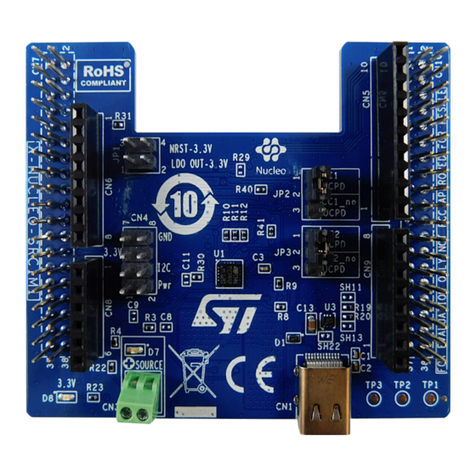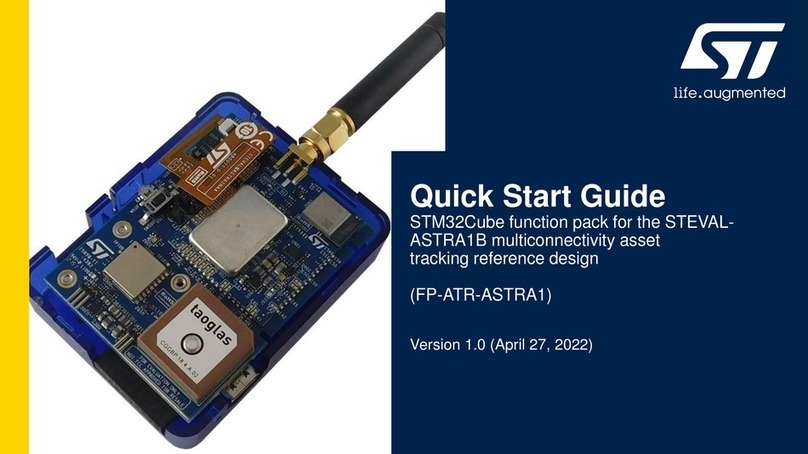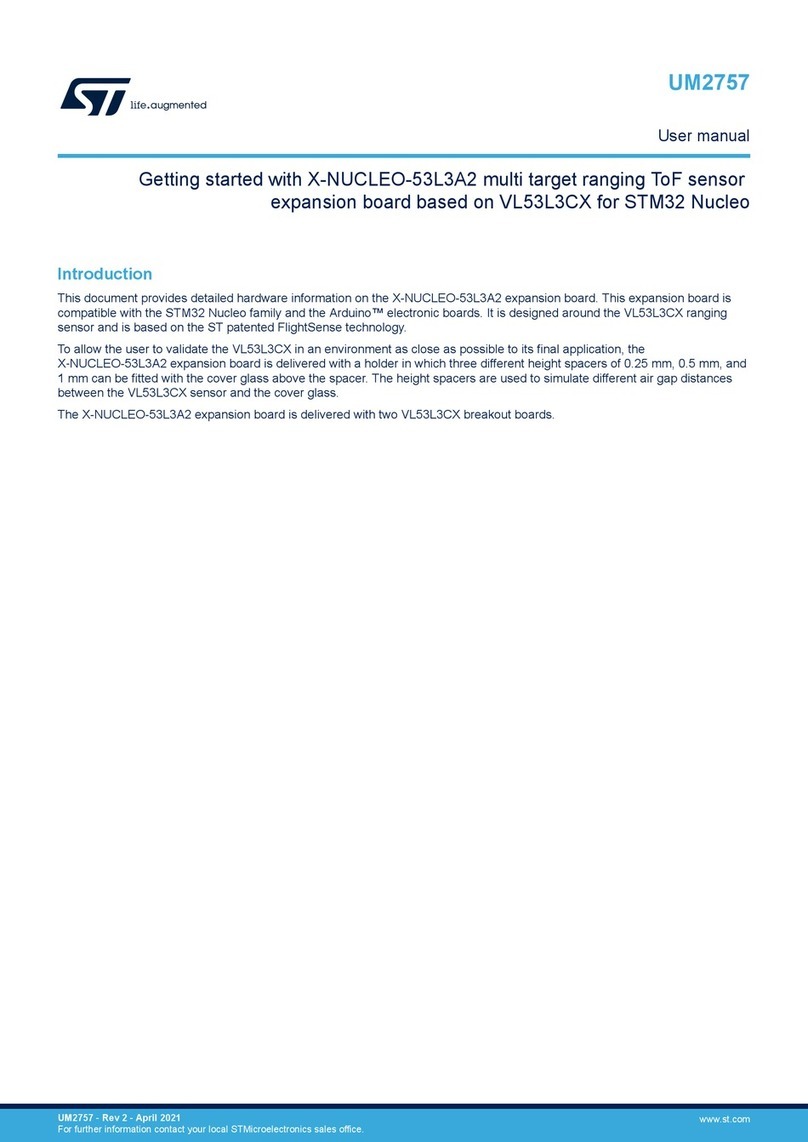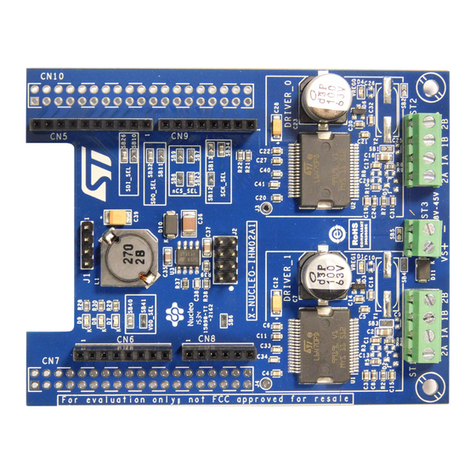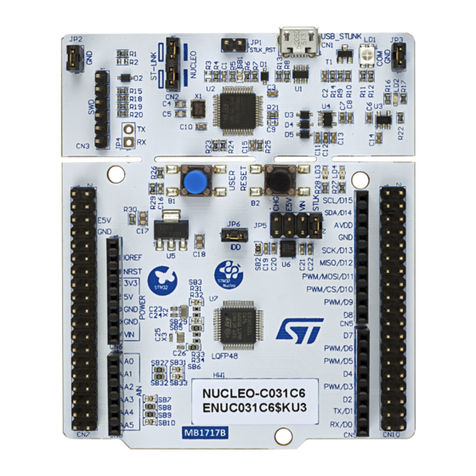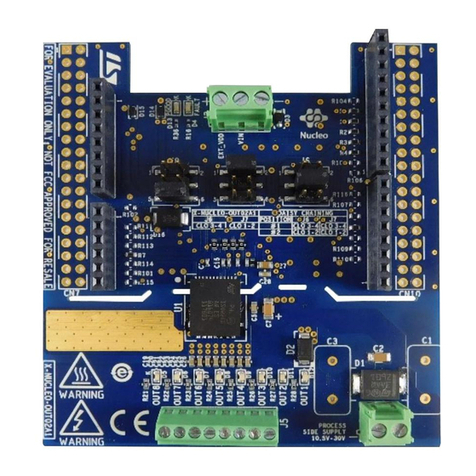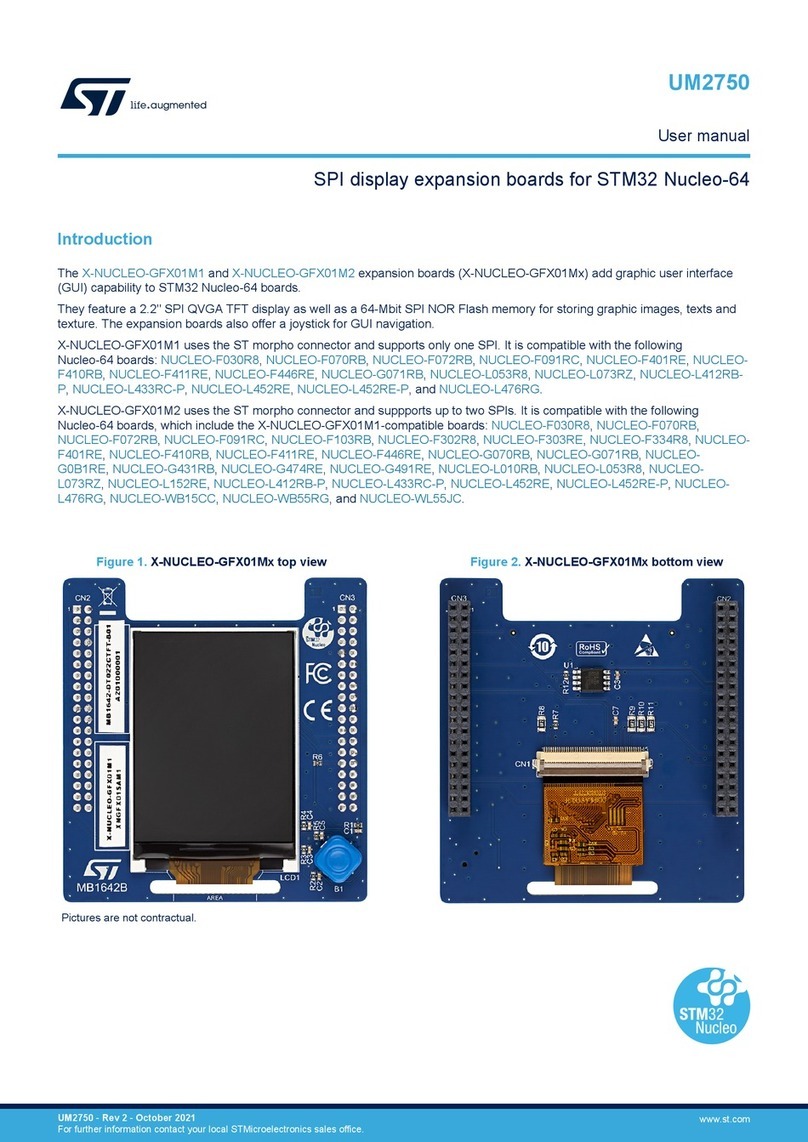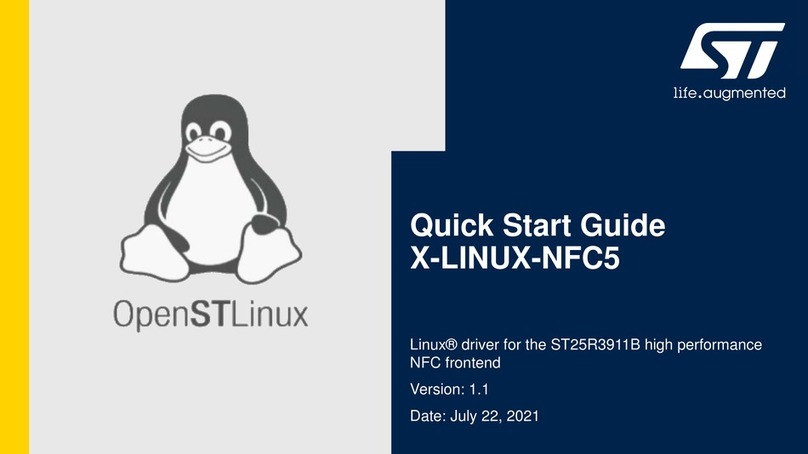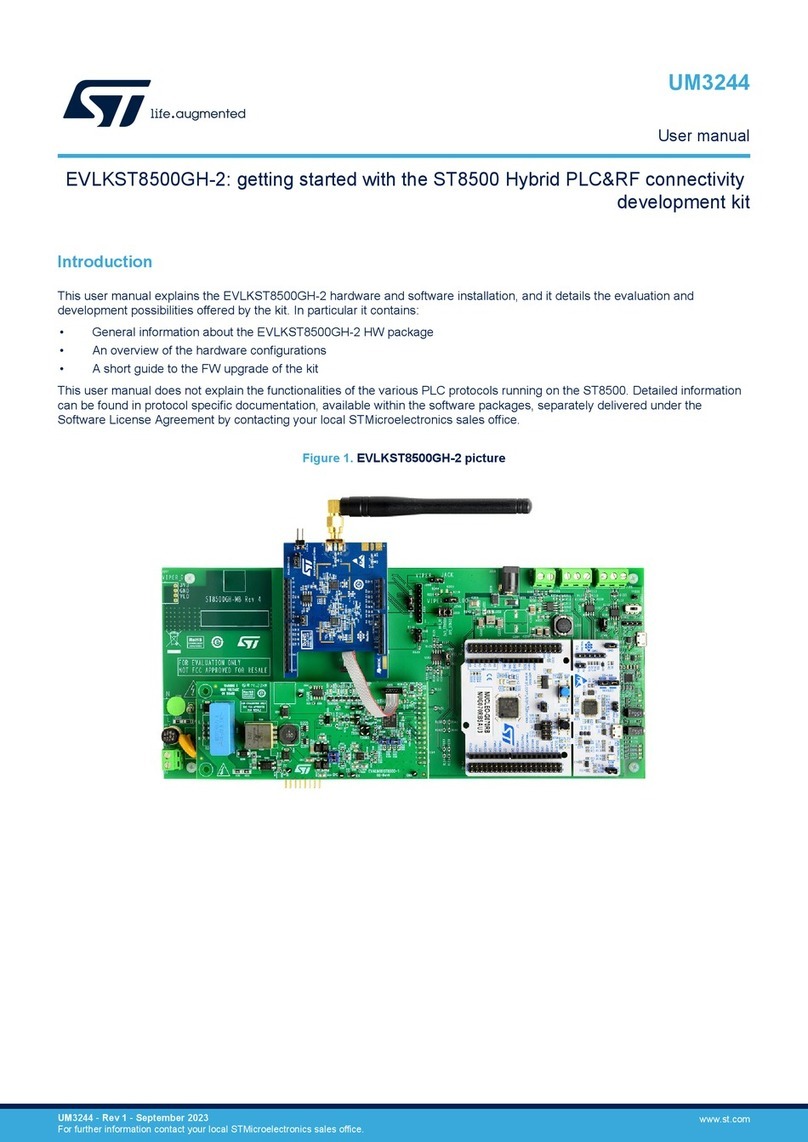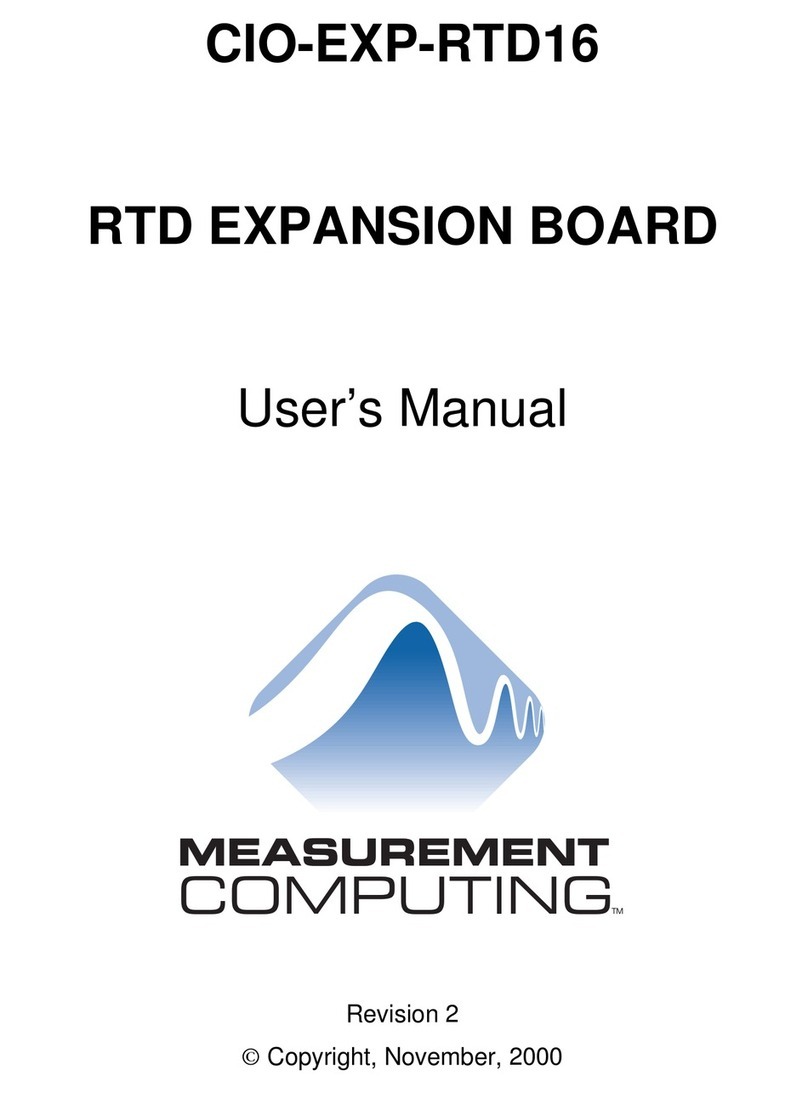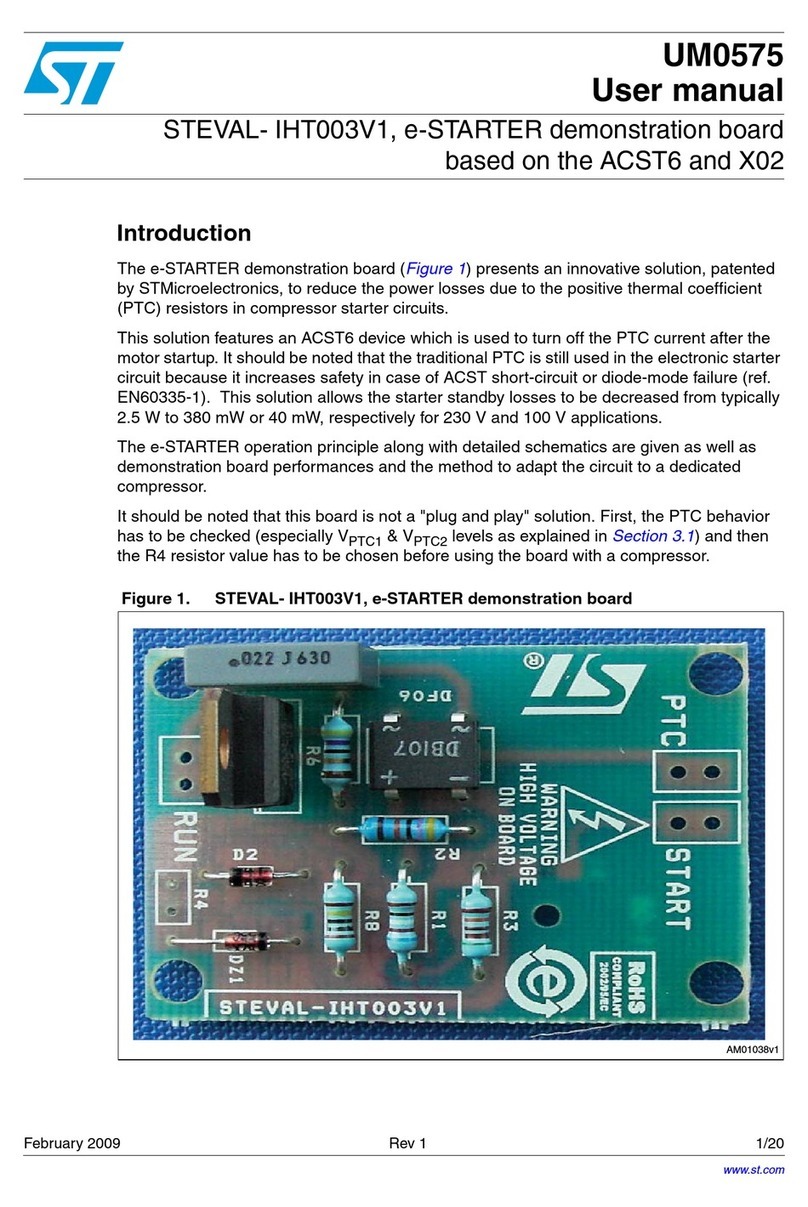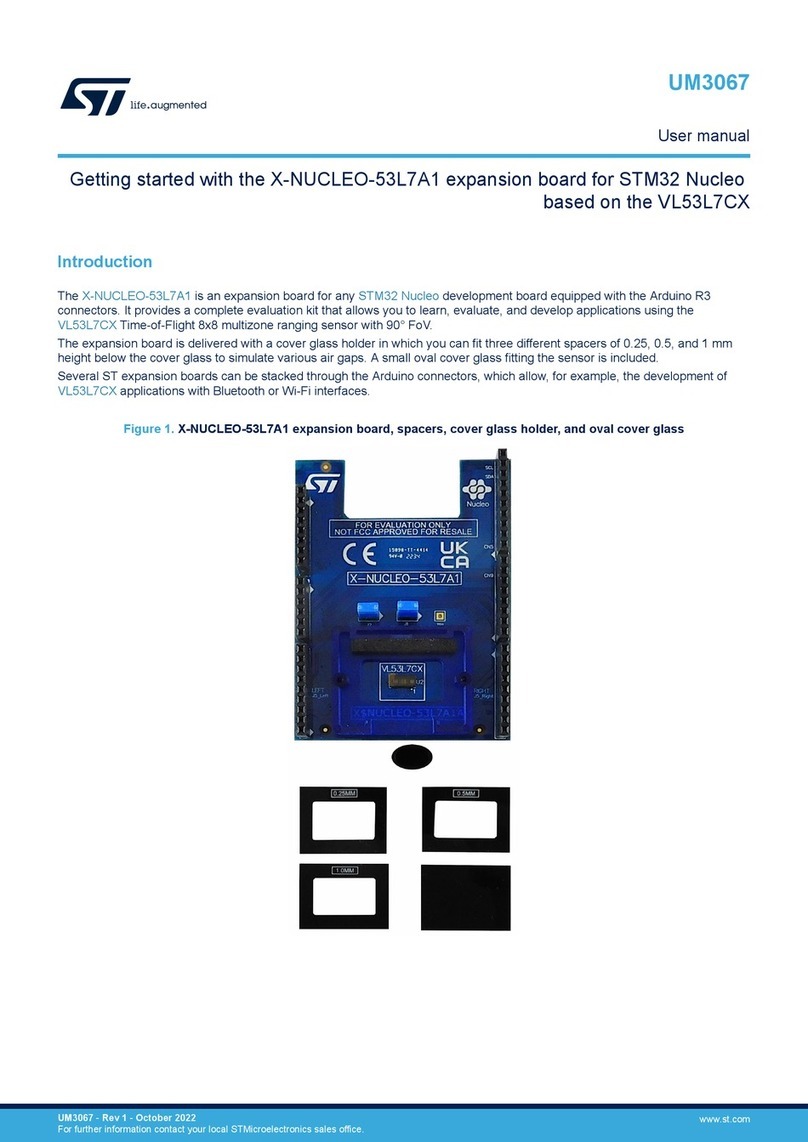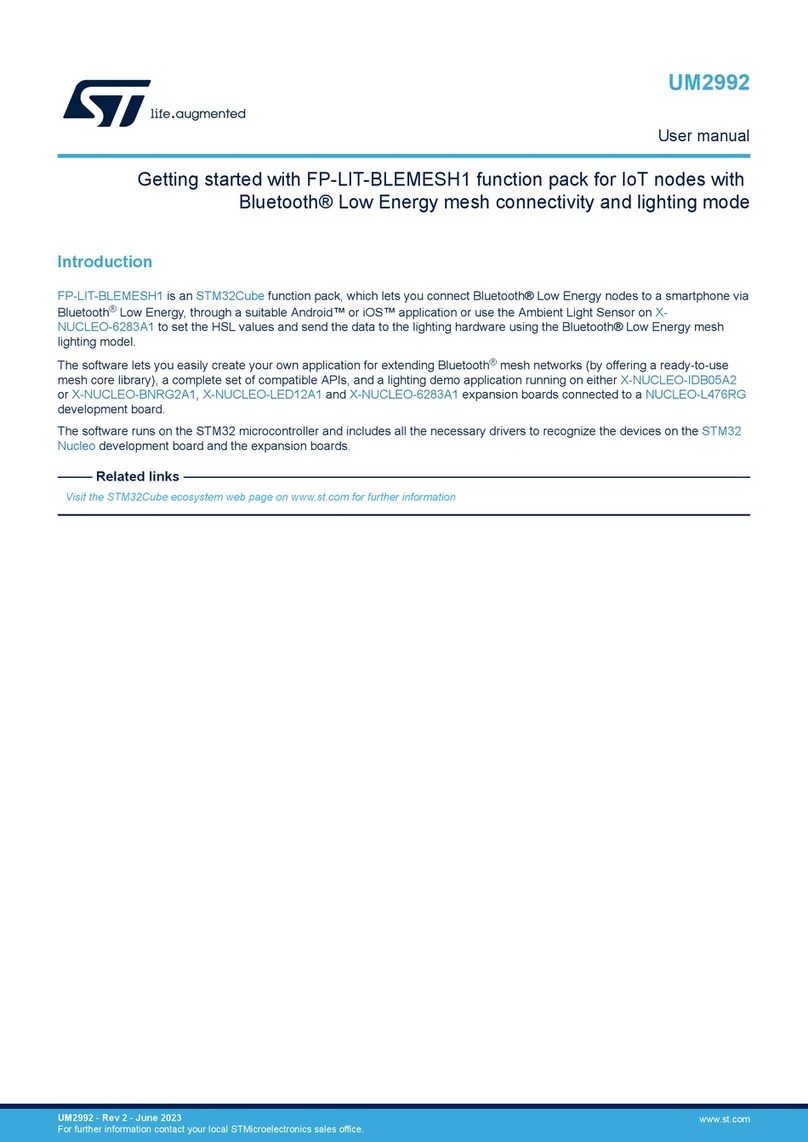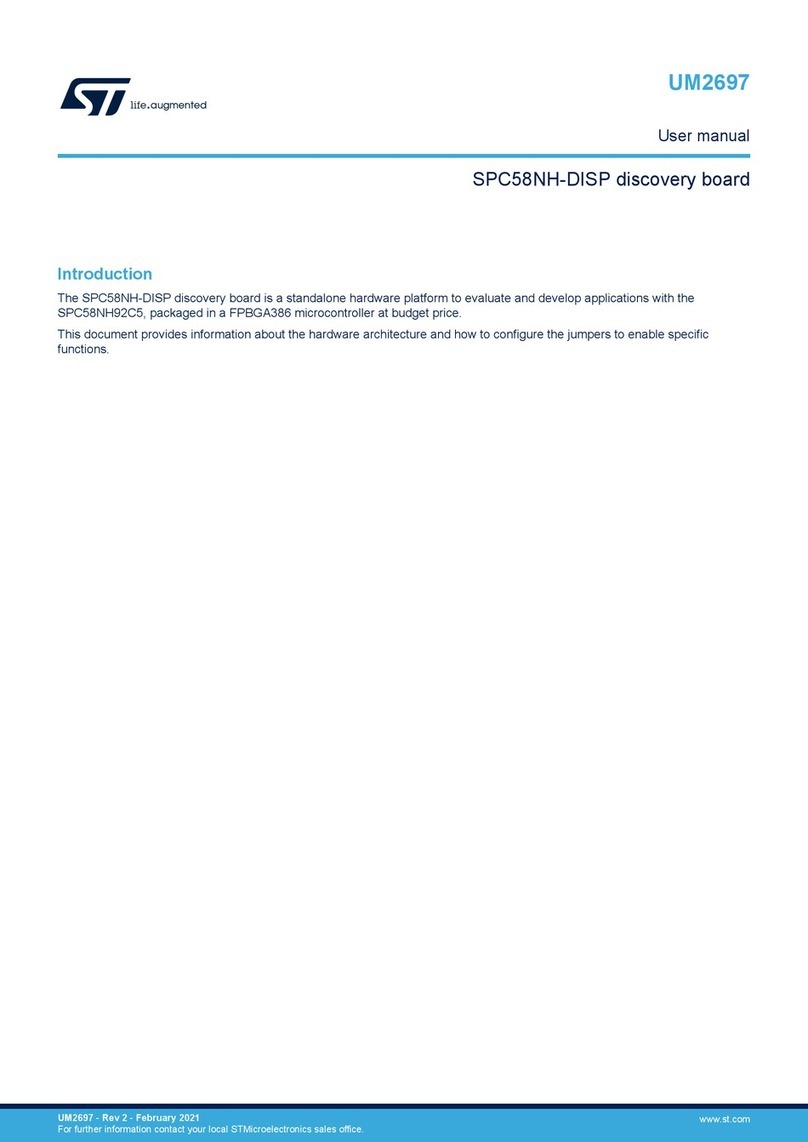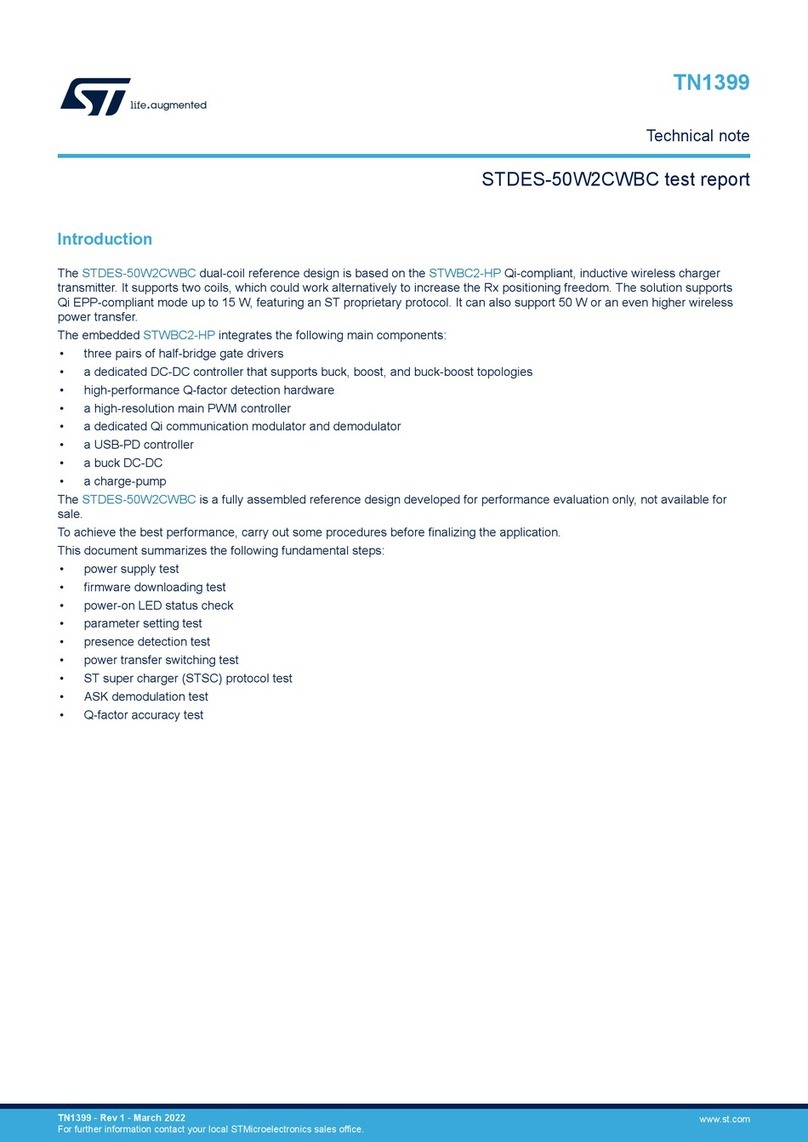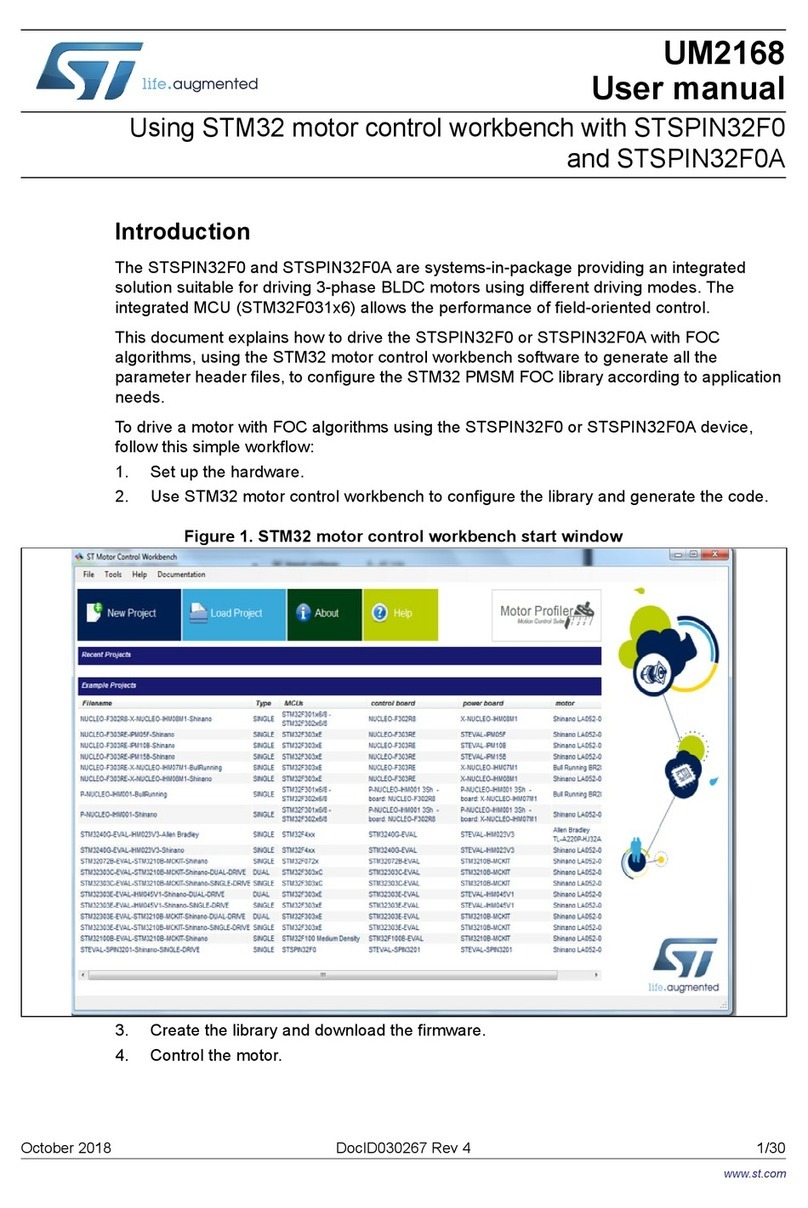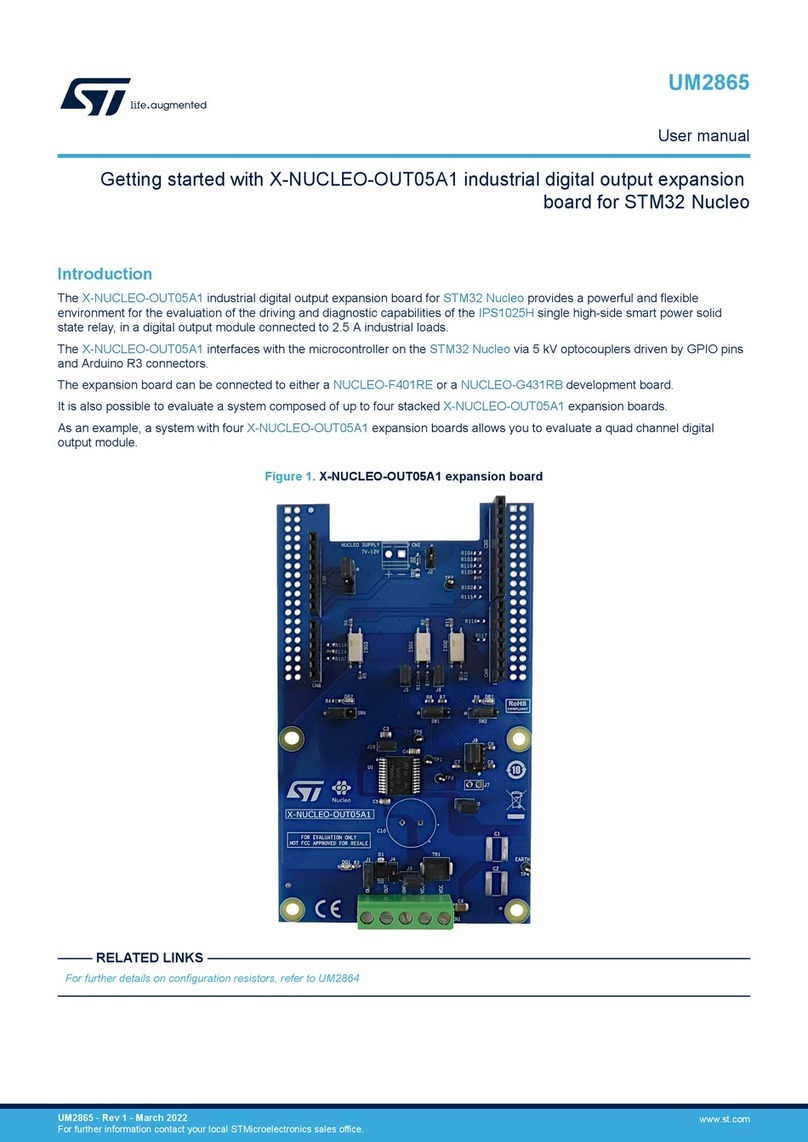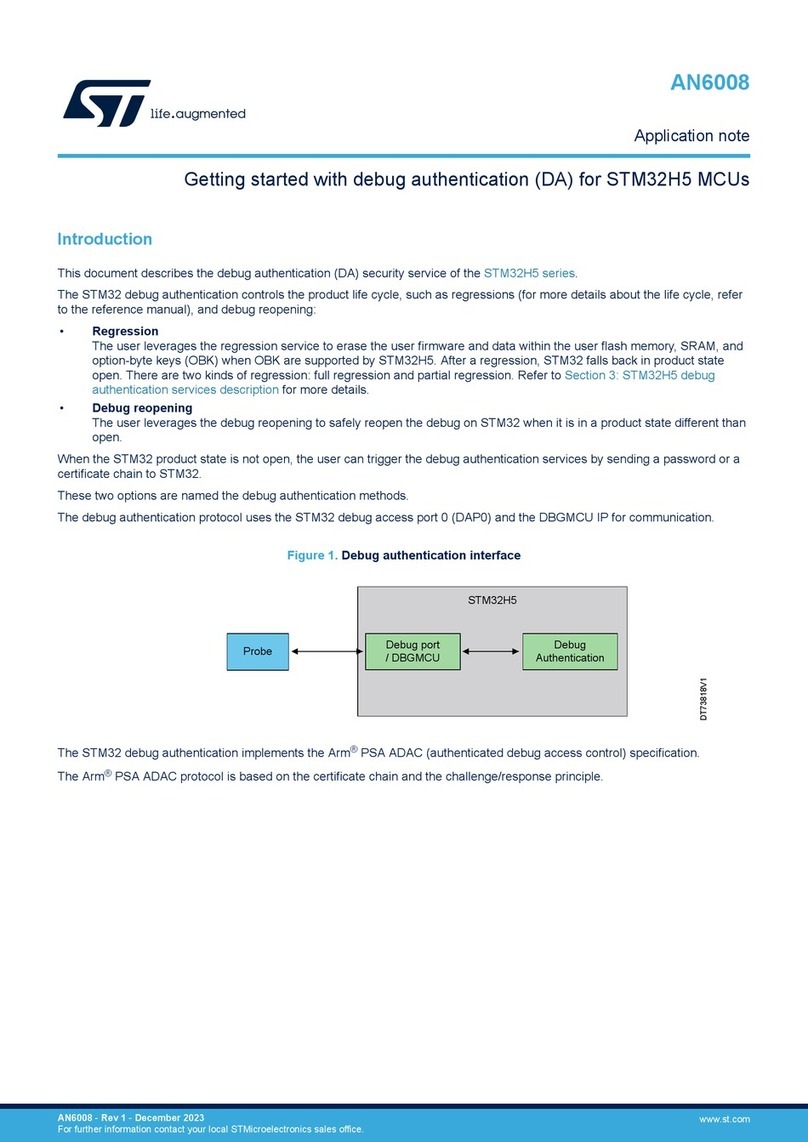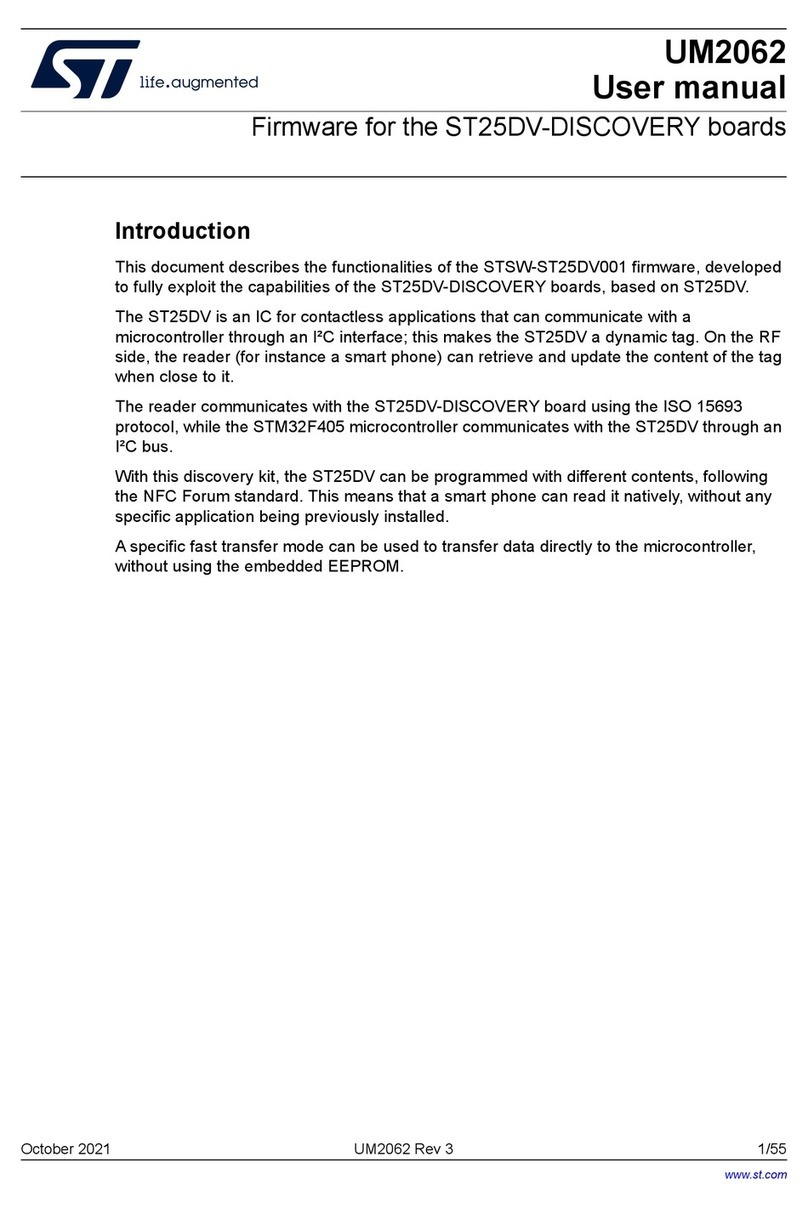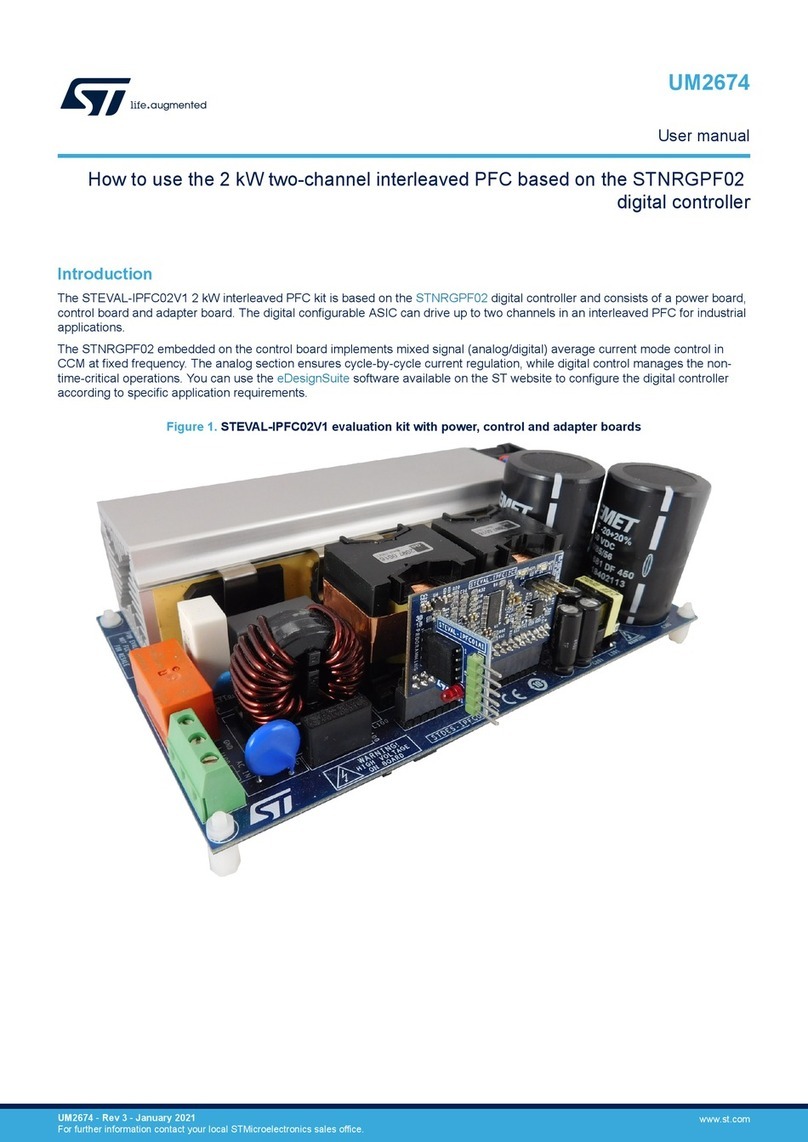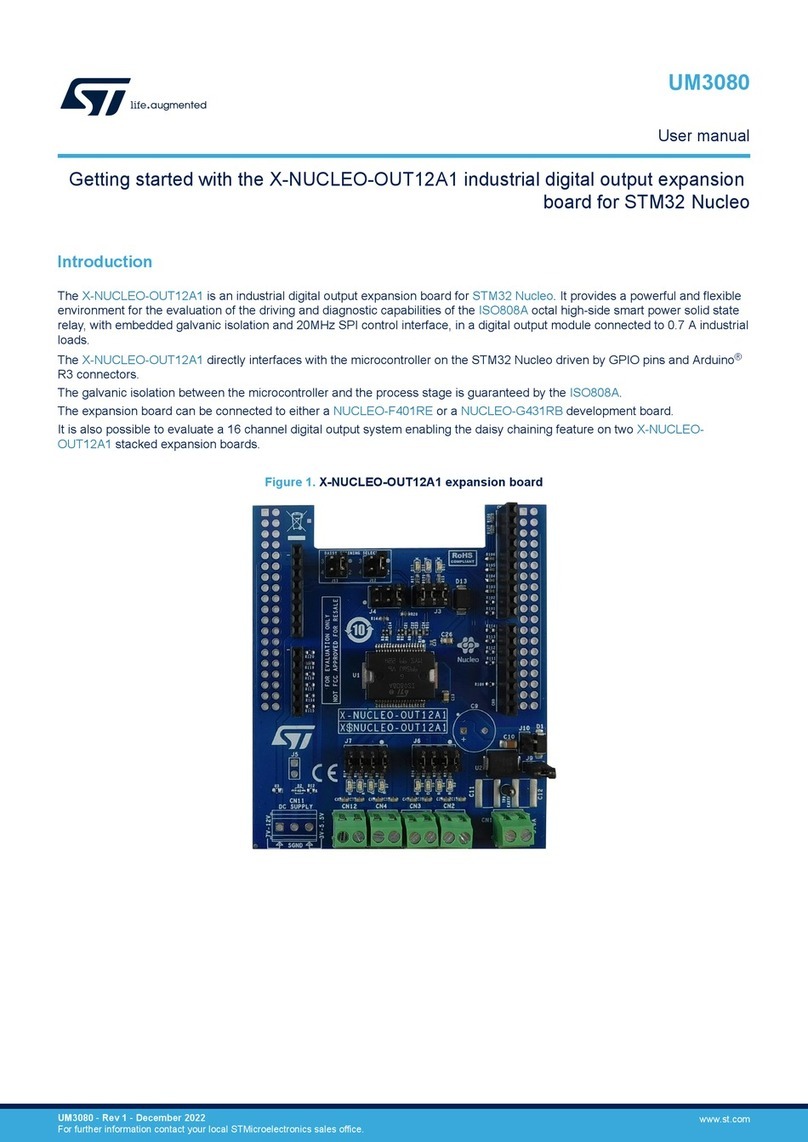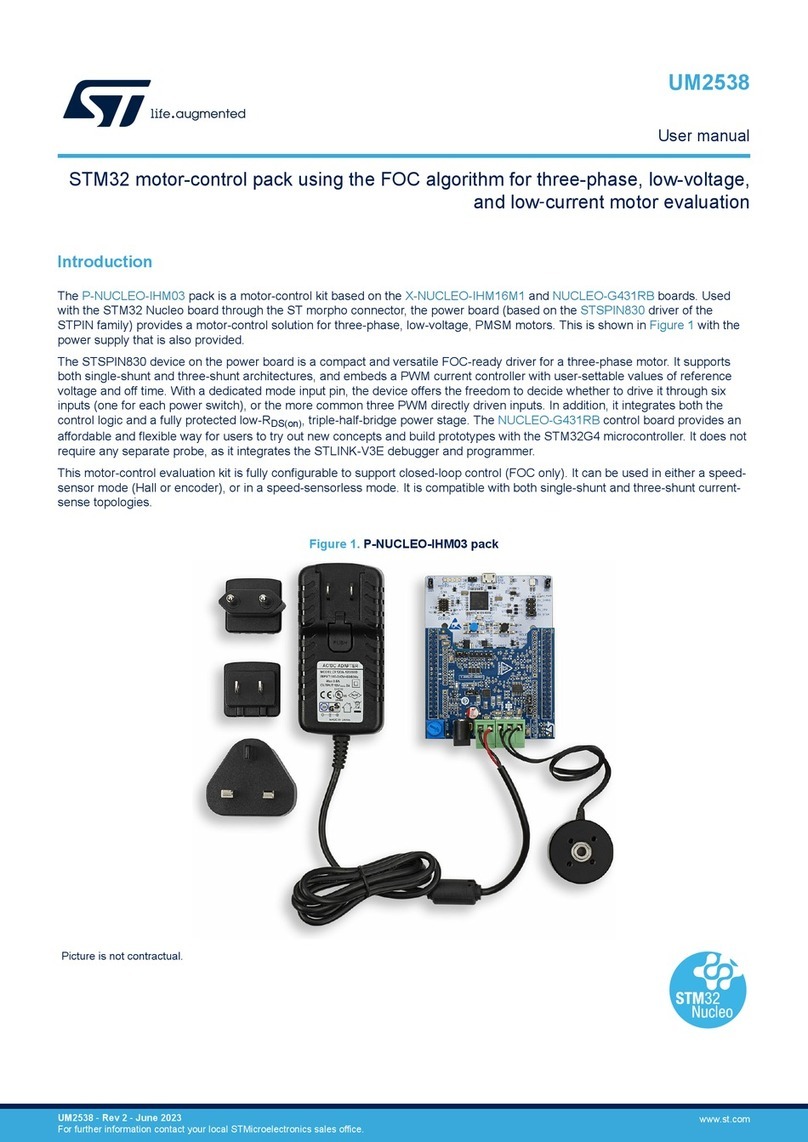
General information UM2426
6/56 UM2426 Rev 5
1 General information
This user manual describes the X-CUBE-CELLULAR Expansion Package and its use. It
explains neither the cellular networks nor the cellular protocol stacks, the descriptions of
which being available on the Internet.
The main features of the X-CUBE-CELLULAR Expansion Package are:
•Ready-to-run firmware examples using the 2G, 3G, LTE Cat M1, or NB-IoT protocols to
support quick evaluation and development of IoT cloud applications
•Menu and command line through Virtual COM UART over USB ST-LINK to configure
the cellular connectivity parameters (technology selection, bands, APN, and others),
and connection to the GroveStreams cloud IoT platform (HTTP)
•Cellular connection
•Reporting of such values as temperature, humidity, and pressure. The values are real if
the MEMS add-on board (X-NUCLEO-IKS01A2) is connected, otherwise they are
simulated. The sensors in the “Discovery IoT node cellular” set are always used
•Network radio level reporting
•PING application to test the access to a remote machine
•ECHO application to provide an example of connection and data exchanges using the
TCP or UDP (connected or not-connected mode) socket protocols
X-CUBE-CELLULAR is available for the following hardware:
•both the P-L496G-CELL01 and P-L496G-CELL02 cellular-to-cloud packs. Each pack is
composed of an STM32L496AG-based Discovery host board connected to an add-on
cellular modem through the STMod+ connector:
– The add-on board of P-L496G-CELL01 is equipped with the UG96 modem
(2G / 3G) from Quectel
– The add-on board of P-L496G-CELL02 is equipped with the BG96 modem (LTE
Cat M / NB-IoT / 2G fallback) from Quectel
•the “Discovery IoT node cellular” set, which is a combination of the B-L475E-IOT01A
IoT Discovery board, X-NUCLEO-STMODA1 ARDUINO®/ STMod+ adapter, and:
– either STMicroelectronics MB1329 modem board with Quectel BG96 modem
– or Sequans®GM01Q-STMOD modem board with the GM01Q modem (referenced
as B-CELL-GM01Q in STMicroelectronics)
•32L496GDISCOVERY Discovery board connected to one of these modem boards:
– Sequans®GM01Q-STMOD with the GM01Q modem
– Add-on board with the Quectel UG96 or BG96 modem
Refer to the X-CUBE-CELLULAR cellular connectivity Expansion Package porting on other
hardware application note (AN5249) for adaptation to other hardware such as the
“Discovery IoT node cellular” set.
1.1 Terms and definitions
Table 1 presents the definition of acronyms that are relevant for a better understanding of
this document.
